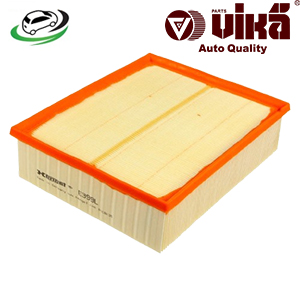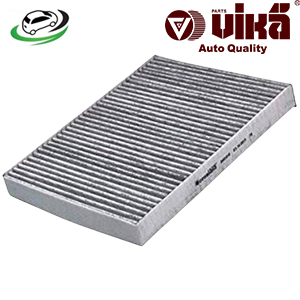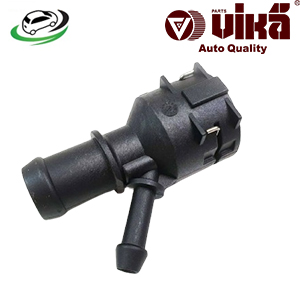-20%
Get Radiator Coolant Hose Adapter Audi 8P/8U/8J & Volkswagen MK5/MK6/5N 1K0122291C
A radiator coolant hose adapter is a vital component in the cooling system of an internal combustion engine. It plays a crucial role in ensuring the efficient transfer of coolant between different parts of the cooling system, including the radiator, engine block, and heater core. Understanding the function, types, installation, and common issues associated with radiator coolant hose adapters is essential for maintaining the health and performance of a vehicle’s engine.
Function of Radiator Coolant Hose Adapters
- Connecting Components: The primary function of a radiator coolant hose adapter is to connect different sections of the cooling system. This allows coolant to flow seamlessly between the radiator, engine block, and other components.
- Ensuring a Leak-Free Seal: Radiator coolant hose adapters provide a secure, leak-free connection between hoses and other parts of the cooling system. This is crucial for maintaining the correct pressure and preventing coolant loss.
- Facilitating Custom Installations: In custom or modified vehicles, radiator coolant hose adapters are often used to accommodate non-standard or upgraded components. They allow for flexible routing of hoses and connections.
- Reducing Vibration and Movement: These adapters help absorb vibrations and movement within the cooling system, reducing the risk of hose wear and damage over time.
Types of Radiator Coolant Hose Adapters
- Straight Adapters: These are the most common type, used to connect two hoses of the same diameter in a straight line. They are simple and effective for most standard applications.
- Elbow Adapters: These adapters have a 45-degree or 90-degree bend, allowing for connections in tight spaces or around obstacles. They are essential for routing hoses in compact engine bays.
- Reducer Adapters: These adapters connect hoses of different diameters. They are used when the components being connected have different inlet or outlet sizes.
- T-Fittings and Y-Fittings: These adapters allow for splitting or combining coolant flow between multiple hoses. They are used in systems where coolant needs to be diverted to different components.
- Quick-Disconnect Adapters: These adapters allow for easy and quick disconnection of hoses, which is useful for maintenance and repair tasks. They are commonly found in modern vehicles.
- Custom Adapters: For specialized or modified cooling systems, custom adapters can be fabricated to meet specific requirements. These are often used in performance or racing applications.
Signs of a Faulty Radiator Coolant Hose Adapter
- Coolant Leaks: Visible coolant leaks around the adapter or hose connections can indicate a faulty or damaged adapter. Leaks can lead to low coolant levels and engine overheating.
- Coolant Smell: A sweet, antifreeze smell in or around the vehicle can be a sign of a coolant leak from a faulty hose adapter.
- Overheating Engine: If the engine is running hotter than usual, it could be due to a compromised hose adapter that is not maintaining proper coolant flow.
- Low Coolant Levels: Frequent need to top off coolant levels can indicate a leak in the system, possibly from a faulty adapter.
- Visible Damage: Cracks, wear, or deformation on the adapter or connected hoses can be a sign of a failing component that needs replacement.
Maintenance and Replacement
Regular maintenance and timely replacement of radiator coolant hose adapters are essential to ensure the cooling system functions properly and to avoid engine overheating. Here are some steps to follow:
- Regular Inspection: Check the coolant hose adapters and connected hoses during routine maintenance. Look for signs of wear, leaks, or damage.
- Coolant System Flush: Periodically flushing the coolant system can help identify and prevent issues with the adapters. It also ensures the coolant is clean and effective.
- Proper Installation: Ensure adapters are correctly installed, with secure clamps or fasteners to prevent leaks. Use high-quality hose clamps and gaskets as needed.
- Timely Replacement: Replace adapters at the first sign of damage or wear. Using OEM (Original Equipment Manufacturer) parts or high-quality aftermarket parts is recommended for reliability.
- Professional Service: If unsure about the condition of your radiator coolant hose adapters or how to replace them, consult a professional mechanic for accurate assessment and service.
Replacement Procedure
- Coolant Drainage: Begin by draining the coolant from the system to prevent spills and allow for safe replacement of the adapter. This is usually done by opening the radiator drain valve or removing the lower radiator hose.
- Locate the Adapter: Identify the faulty adapter in the cooling system. This could be between the radiator and engine block, heater core, or other components.
- Remove the Old Adapter: Loosen and remove the hose clamps or fasteners securing the adapter. Carefully detach the hoses from the adapter and remove it from the system.
- Inspect and Clean: Check the hoses and connected components for any signs of damage or wear. Clean the hose ends and connection points to ensure a proper seal with the new adapter.
- Install the New Adapter: Position the new adapter between the hoses and secure it with clamps or fasteners. Ensure it is properly seated and there are no gaps.
- Reconnect Hoses: Attach the hoses to the new adapter and tighten the clamps or fasteners securely. Double-check all connections for tightness and proper fit.
- Refill Coolant: Refill the coolant system with the appropriate type and amount of coolant. Bleed the system to remove any air pockets that could cause overheating.
- Final Check: Start the engine and let it run to check for leaks and ensure proper operation of the cooling system. Monitor the temperature gauge and coolant levels.
Common Issues and Troubleshooting
- Incorrect Adapter Size: Using an adapter of the wrong size or type can lead to poor sealing and leaks. Always use the specified adapter for your vehicle.
- Improper Clamping: Loose or over-tightened clamps can cause leaks or damage to the hoses and adapter. Ensure clamps are properly tightened to secure the connection.
- Material Compatibility: Ensure the adapter material is compatible with the coolant and other system components. Some materials may degrade over time or react with certain coolants.
- Neglecting Maintenance: Failing to regularly inspect and maintain the cooling system can lead to premature adapter failure and potential engine damage.
- Poor Quality Parts: Using low-quality or incompatible aftermarket parts can result in poor performance and reliability. Invest in high-quality parts from reputable manufacturers.
Follow us on Facebook for more parts.



